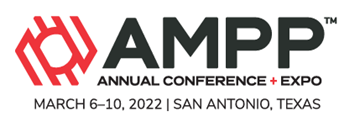Search
Individual Conference Papers
View as
Sort by
Display
per page
Managing wet H2S Cracking in Refineries
Product Number:
51312-01136-SG
ISBN:
01136 2012 CP
Publication Date:
2012
$20.00
Mandatory Integrity Reassessment of Gravity-Fed Crude Oil Pipeline Using MP-ICDA in Kuwait
Product Number:
51321-16269-SG
Publication Date:
2021
$20.00
Manhole Rehabilitation - The Role Played by Linings
Product Number:
41212-689-SG
Publication Date:
2012
$20.00
Mapping Effective Corrosion Inhibitor Dose in a Large Onshore Oilfield
Product Number:
51314-4245-SG
ISBN:
4245 2014 CP
Publication Date:
2014
$0.00
Mapping Indication Severity Using Bayesian Machine Learning From Indirect Inspection Data By Considering The Impact Of Soil Corrosivity
Product Number:
51321-16749-SG
Publication Date:
2021
$20.00
Martin “B-C” Zone Reservoir Liner Replacement Doing our Part for the Tucson Water Department Construction/Inspection Team
Product Number:
41213-733-SG
Publication Date:
2013
$20.00
Material and Manufacturing Study to Enable Coreblocks for Microractor Technology
Product Number:
ED22-17136-SG
Publication Date:
2022
$20.00
Material Capabilities Of Additively Manufactured Alloy UNS N07718 In An H2S-Containing Environment
Product Number:
51322-17938-SG
Publication Date:
2022
$20.00
Material Efficiency through Modern Repair Coating Solutions for Offshore Corrosion Protection
Product Number:
51324-21158-SG
Publication Date:
2024
$40.00
Material Qualification in Saline Copper Containing Geothermal Water
Product Number:
51319-12862-SG
Publication Date:
2019
$20.00
Material Qualification of Sour Service Grades for Extreme Sour Conditions
Product Number:
51323-19113-SG
Publication Date:
2023
$20.00
Material Selection and Process Control in Tail Gas Treating Unit (TGTU)
Product Number:
51323-19397-SG
Publication Date:
2023
$20.00












